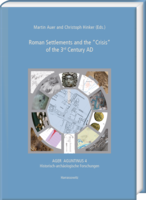|
|
more titles of the subject:
Download:
Please note: With adding digital Products to your cart
the payment will be handled via PayPal. The download will be provided after the payment is confirmed. This volume, edited by Martin Auer and Christoph Hinker, unites 13 papers presented at the 4th Aguntum Workshop. This international conference was dedicated to the discussion of the so-called crisis the Roman empire experienced during the 3rd century AD. The aim of the workshop was to bring together archaeological data from different parts of the Imperium pertinent to the 3rd century. In some areas, severe changes occurred during the 3rd century, which is linked to a loss of influence of the Imperial administrative structures. This is the case in the municipium Aguntum, where we were able to discover that a destructive fire raged in the area of the town center. Although we do now know why the fire broke out, it is a fact that the area was not renovated afterwards. This neglect can be seen as an indicator of the town’s decreasing economic power.
The diverse examples of archaeological traces of this “crisis”, which are presented in this volume, show that the 3rd century AD was a time of severe transformation with different impact on and consequences for various regions of the Roman Empire. However, change does not automatically mean crisis and for some settlements (e.g. some people) the 3rd century was a time of great prosperity. Nevertheless, there seems to be a tendency towards the reduction of towns and decrease of centralized administration in favor of a range of smaller centers like rural and hilltop settlements or villae. |
|||||||||||||||||||||||||||||||||||||||||






